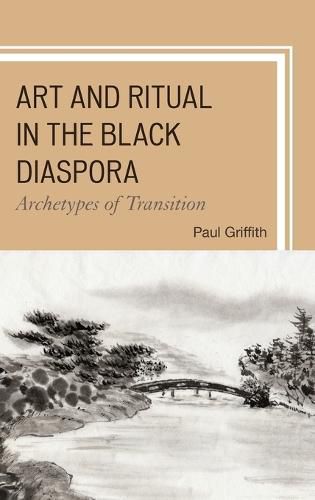Readings Newsletter
Become a Readings Member to make your shopping experience even easier.
Sign in or sign up for free!
You’re not far away from qualifying for FREE standard shipping within Australia
You’ve qualified for FREE standard shipping within Australia
The cart is loading…






Archetypes of Transition in Diaspora Art and Ritual examines residually oral conventions that shape the black diaspora imaginary in the Caribbean and America. Colonial humanist violations and inverse issues of black cultural and psychological affirmation are indexed in terms of a visionary gestalt according to which inner and outer realities unify creatively in natural and metaphysical orders. Paul Griffith’s central focus is hermeneutical, examining the way in which religious and secular symbols inherent in rite and word as in vodun, limbo, the spirituals, puttin’ on ole massa, and dramatic and narrative structures, for example, are made basic to the liberating post-colonial struggle. This evident interpenetration of political and religious visions looks back to death-rebirth traditions through which African groups made sense of the intervention of evil into social order. Herein, moreover, the explanatory, epistemic, and therapeutic structures of art and ritual share correspondences with the mythic archetypes that Carl Jung posits as a psychological inheritance of human beings universally.
$9.00 standard shipping within Australia
FREE standard shipping within Australia for orders over $100.00
Express & International shipping calculated at checkout
Archetypes of Transition in Diaspora Art and Ritual examines residually oral conventions that shape the black diaspora imaginary in the Caribbean and America. Colonial humanist violations and inverse issues of black cultural and psychological affirmation are indexed in terms of a visionary gestalt according to which inner and outer realities unify creatively in natural and metaphysical orders. Paul Griffith’s central focus is hermeneutical, examining the way in which religious and secular symbols inherent in rite and word as in vodun, limbo, the spirituals, puttin’ on ole massa, and dramatic and narrative structures, for example, are made basic to the liberating post-colonial struggle. This evident interpenetration of political and religious visions looks back to death-rebirth traditions through which African groups made sense of the intervention of evil into social order. Herein, moreover, the explanatory, epistemic, and therapeutic structures of art and ritual share correspondences with the mythic archetypes that Carl Jung posits as a psychological inheritance of human beings universally.